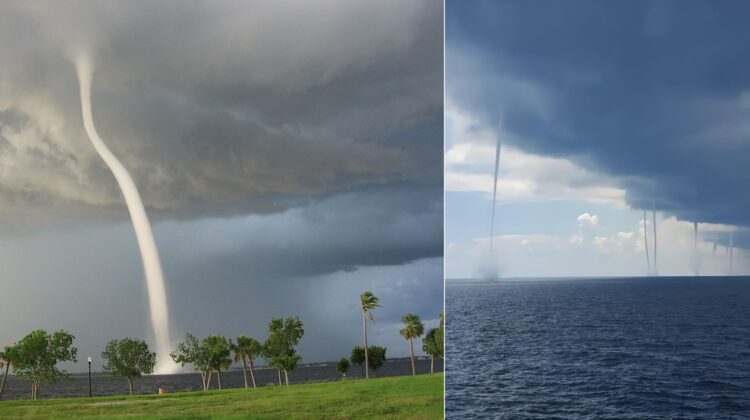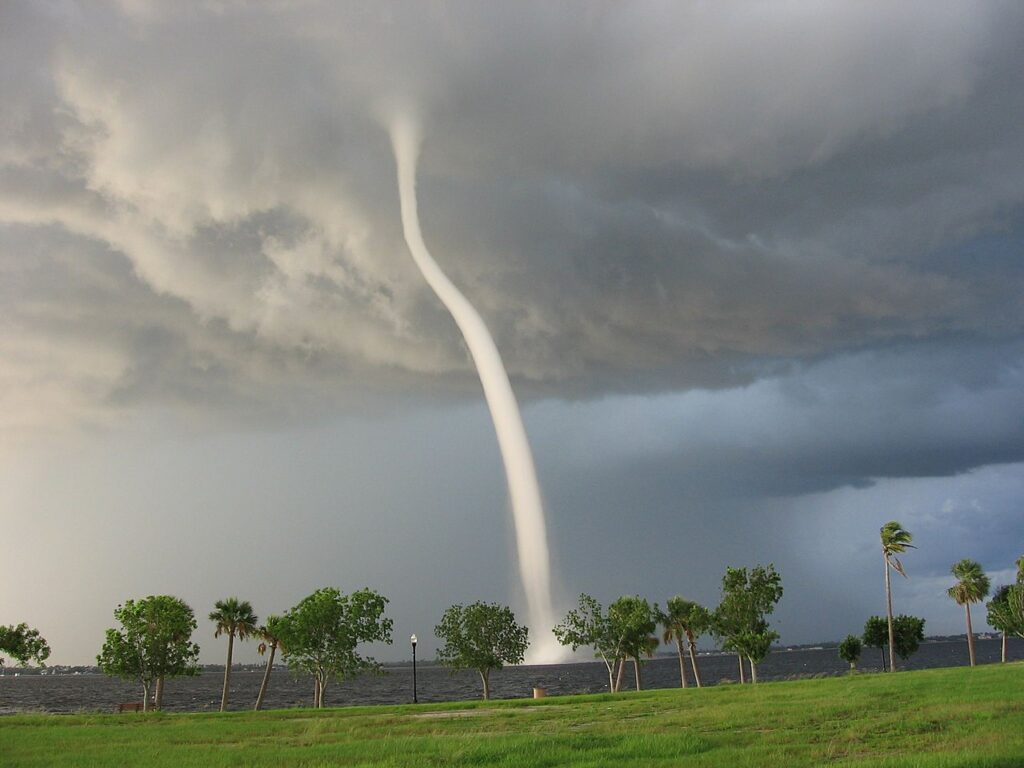
Waterspouts are a breathtaking atmospheric phenomenon that never fail to captivate those who witness them. They are essentially tornadoes that form over water and can occur in both saltwater and freshwater environments. But what makes these swirling wonders so mesmerizing? Let’s take a closer look.
Waterspouts are formed as a result of complex atmospheric conditions. They typically occur in areas where warm and cool air masses meet, such as in the tropics or during stormy weather. When a thunderstorm or heavy rain shower passes over a body of water, it can create conditions that are conducive to waterspout formation.

There are two main types of waterspouts: tornadic and fair-weather. Tornadic waterspouts are the more powerful of the two and are associated with thunderstorms that can have wind speeds of up to 100 miles per hour or more. Fair-weather waterspouts, on the other hand, are much weaker and typically form on clear, calm days. They are usually much smaller and shorter-lived than tornadic waterspouts.
Waterspouts form when winds blowing in two different directions run into each other, creating a significant amount of rotational air near the surface. The upward moving air transports water vapor high into the sky, creating showers and cumulus clouds. As the air ascends, it can alter the horizontal rotation of air close to the surface and cause it to shift into the vertical direction. When this vertical spin consolidates in a particular spot, it begins to draw up water, resulting in a waterspout.

Contrary to popular belief, a waterspout is not filled with water from the ocean or lake above which it appears. Rather, the water inside it is formed through condensation within the cloud. This makes waterspouts a unique natural phenomenon to observe.
Waterspouts can form just about anywhere in the world’s coastal regions, without any specific location being more prone to their occurrence. However, certain regions experience waterspouts more frequently than others. The Florida Keys, Cienfuegos Bay in Cuba, and the Great Lakes are among the places where waterspouts have been most commonly observed.

Occasionally, a winter waterspout, also referred to as an icespout, ice devil, or snowspout, can form beneath the base of a snow squall. This type of waterspout is a unique occurrence and is distinguished from the more common warm-season waterspout. For a snowspout to form, two critical conditions must be met. Firstly, the body of water beneath it must be warm enough to generate fog that appears like steam in frigid temperatures. Secondly, winds focused down the axis of lengthy lakes enhance wind convergence and likely play a role in their development.
While waterspouts can be fascinating to watch, they can also be dangerous. Tornadic waterspouts, in particular, can cause significant damage to boats, buildings, and other structures. They can also be hazardous to swimmers and other individuals who are in or near the water. Therefore, it is always a good idea to stay informed and be aware of the local weather conditions before observing these mesmerizing swirling wonders.
In conclusion, waterspouts are an awe-inspiring natural phenomenon that are formed as a result of complex atmospheric conditions. They can be both beautiful and dangerous, and it is always important to exercise caution when observing them. Nevertheless, the mesmerizing beauty of waterspouts is something that should not be missed, and they are a reminder of the incredible power of nature.

Leave a Reply